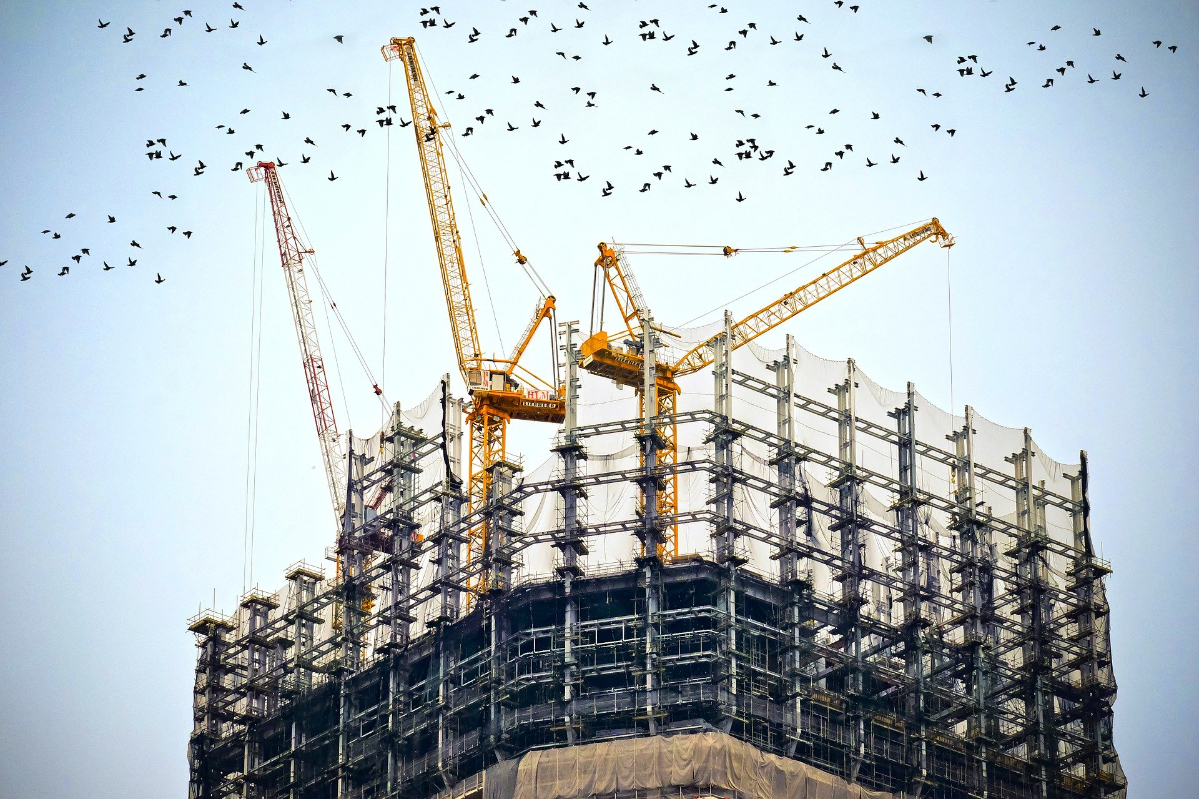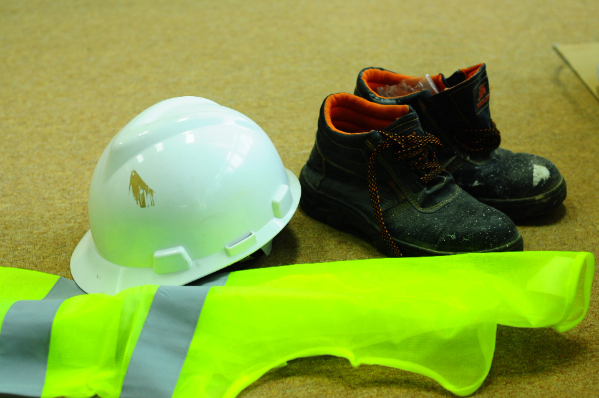Why Is Construction A High Risk Industry? We look at why construction workers are at high risk and the importance of controlling health risks in the construction site environment.
What are The Construction Health Risks?

Amongst the industrial sectors, construction has the largest burden of occupational cancer. It accounts for over 40% of occupational cancer registrations and cancer deaths.
Approximately 3,700 deaths are estimated to be caused by past exposures in the construction industry annually. Asbestos is the leading cause of cancer in this sector at 70%, followed by silica with 17% and diesel engine exhaust at 6-7%.
Construction workers are constantly exposed to potentially harmful substances, often without even being aware. These hazardous substances come in four forms:
Solids - Particles of solid material such as dust and fibres.
Liquids - Sprays and aerosols made up of small droplets (for example, spray paint).
Vapours - Gaseous forms of a solid or liquid (for example, solvent vapour).
Gases - Harmful gases caused by construction equipment processes and vehicles, such as carbon dioxide.
Micro-organisms - Viruses, bacteria and fungi present almost anywhere on site.
In some circumstances, a substance can exist in multiple forms. For example, spraying paint can release both solvent vapour and mists of liquid into the atmosphere. There are three main ways these hazardous substances can enter the body.
The most common way is through the airways and lungs. Without the proper PPE equipment, many workers inhale dangerous chemicals.
Substances can also be absorbed through the skin, particularly through existing wounds like cuts. Through eating, drinking and smoking, harmful chemicals can get into the body through the mouth. A significant amount of construction-related jobs have short lunch breaks, so fewer workers will thoroughly wash their hands.
Building trades and skilled construction, in particular, have the highest estimated prevalence of upper limb disorders and back injury. Manual handling/manual labour is the most commonly reported cause of over seven-day injuries in the industry. Construction also has one of the highest rates of ill health, caused by heavy vibrations and overbearing noise.
The construction of tall structures requires workers to be working at dangerous heights. Many injuries and even fatalities frequently occur from workers falling from heights, and objects/debris falling off these heights and landing on someone.
The busy environment with all the moving objects causes construction sites to become hectic and disorganised. With all the dumper trucks, supply vehicles and heavy lifting equipment, it is almost inevitable a worker will get physically injured, especially when the terrain is uneven.
A specific physically injury caused by construction is Hand-arm vibration syndrome, also known as "Blue-finger". It is a debilitating and painful disease of the blood vessels, joints and nerves, caused by long-term use of ground working equipment and vibratory power tools.
Why construction workers are at high risk
Due to their varied nature, many of the occupational health risks present on a construction site are not always immediately identifiable, as each site is unique. Proper safety risk evaluations are not always accurate, and a great deal of the dangers on these sites are often unforeseen.
With an abundance of machinery, equipment, tools and moving parts, coupled with strict deadlines, construction sites can quickly become extremely dangerous areas.
Higher-ups may try to rush their services to construction services to clients whilst disregarding important factors. The safety of the workers is not always fully prioritised when there is a lot of work to be carried out and tasks to be done. As such, thousands of accidents happen each year.
Project managers who are responsible for on-site safety on construction sites will usually focus on the risk of physical accidents at the workplace such as requiring the employees to use proper hardhats and luminous vests.
These more obvious safety risks are often prioritised over slower acting risks such as fumes and gases. It can potentially take months or even years of symptoms of exposure to harmful chemicals in the air to show so it is not always apparent that such risks exist on the site.
As a large portion of construction workers are self-employed or work for a small company as contractors, proper healthcare and human resources are often lacking. There sometimes isn't a way for workers who need help to find it without potential scrutiny from their employer/upper management, being seen as lazy or "fit enough" for work.
Additionally, many workers can't afford to take time off for their work-related injuries as work opportunities are often scarce for the self-employed.
Importance of controlling health risks
Construction is one of the most dangerous industries and many factors contribute to the health and safety of employees.
From dangerous materials used, to poor quality training, there is no surprise that thousands of workers are injured annually.
It is essential for employers to ensure the safety of those on-site for a multitude of reasons.

Every time unnecessary harm is caused on a construction site, an individual has to suffer. Physical injuries, whilst painful, can also prevent people from activities outside of work, such as going out with family.
The mental harm caused by physical injuries can also demotivate someone or cause extreme anxiety as sufferers will often worry that they will no longer be able to bring in an income. Family and friends of the injured may also be affected.
As a key part of the Construction 2025 strategy, managing workplace health assists employers in retaining skilled and experienced workers. Additionally, it helps workers maintain productive employment.
Failure to keep employees safe can be costly from both an insurance and productivity standpoint. It's important to remember that the Health and Safety Executive (HSE) also operates the 'Fee For Intervention' scheme.
Breaching health and safety laws will find you liable for recovery under the Health and Safety (Fees) Regulations of 2012. Part of the liability includes a complete investigation, inspection and taking enforcement action.
HSE takes all instances of failure to comply with the established health and safety rules very seriously. Your public reputation could be heavily affected after HSE places an enforcement notice on the Public Register.
If prosecution action is taken, you will find your case listed on the Public Register of Convictions, which will be devastating for reputation. In addition, injured employees are more likely to talk negatively about your business to friends and family who will likely spread the word.
In an age of social media, a well-documented post about an accident caused at your workplace can easily be viewed by thousands of people, affecting your employment rate and customer base. This can be especially damaging for companies that don't have any PR contact or damage control in place.
The risk level and reliability of a company can be affected by the corporate and professional standing of a business and as such, it is essential health risks are taken care of. The organisation must comply with codes of conduct, maintain professional integrity, meet all legal obligations and hold the necessary accreditations and qualifications.
Individuals of the company should exercise professionalism and make it a personal responsibility to ensure the safety of themselves and those around them. This is especially true for Directors and Executive Officers, as not only do they represent a public image for the company but are responsible for many high-level decisions regarding health and safety.
In terms of risk management, all employees should be vetted to ensure no single individual can cause great harm to the other employees, themselves or the reputation of the company.
Furthermore, your company should make efforts to assess any contractors or third parties before working with them as you can't be certain those parties take safety as seriously as you do. You wouldn't want insurance costs piling up or even your reputation ruined as a result of a business you are merely associated with.
Are you looking for advice on construction site risk assessment in London? Our specialist architect offers construction risk assessments for Twickenham and the surrounding areas of London.
Architects Near Me
Are you looking for architects near me? If you are looking for RIBA local architect services in Twickenham and the surrounding areas. Trimble Architects works with clients throughout London and the surrounding areas including:


